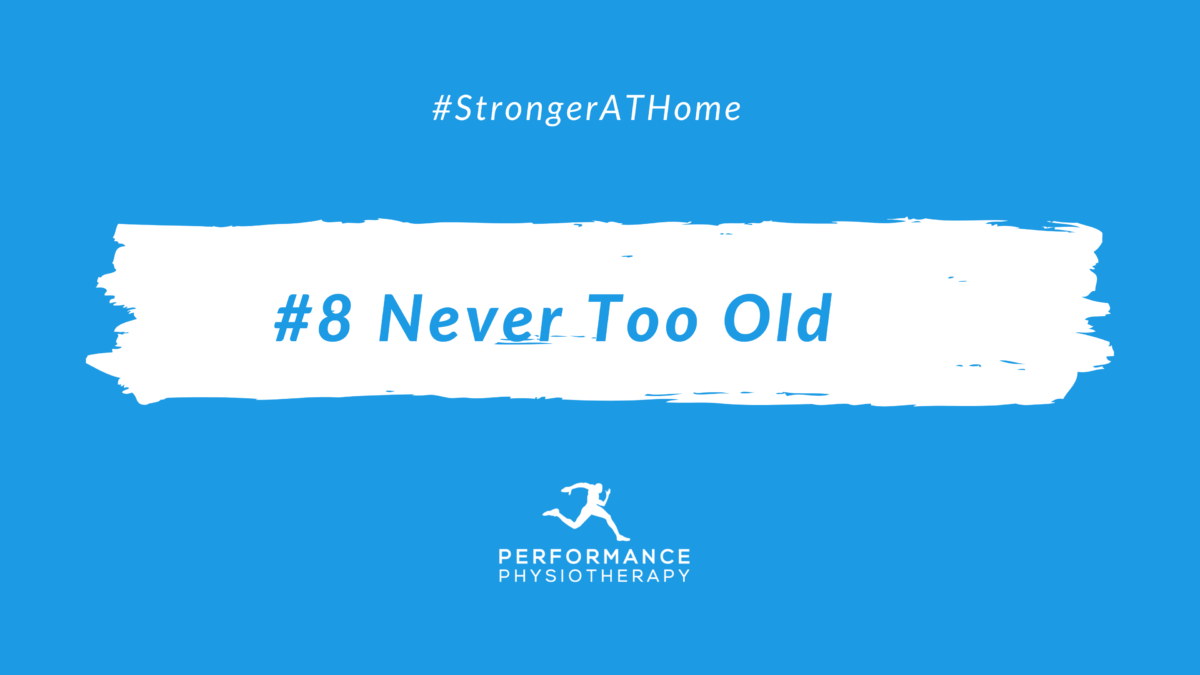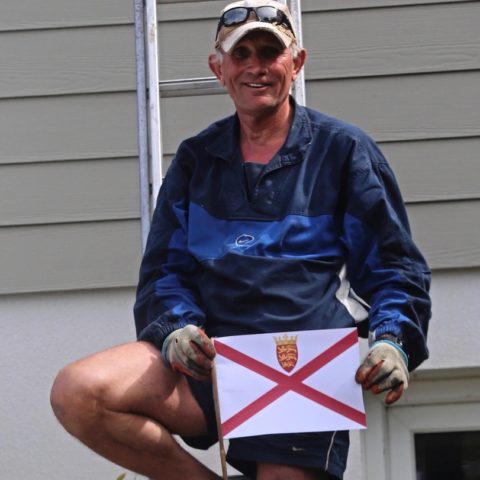Our local restrictions have been eased slightly for certain groups but for those more vulnerable to Covid-19, time in the home will remain for many weeks yet.
Below we discuss what can be done to keep strong and fit in the comfort of your own home.
As we get older it becomes more important to adapt our exercise and training routine to maintain our strength, fitness and well-being. From having an active lifestyle you may accumulate nagging injuries that never quite went away or joints that grumble from time to time. With proper management and the right advice, these issues can be overcome and need not hold you back.
Our friend Peter Picot –who recently ‘climbed Everest’ on a ladder in his back garden to raise funds for the Salvation Army– showed that, despite injury, anything is possible with a little determination… and some good fortune!
“I’ve had some big sports injuries over the years but have been lucky enough to come through relatively unscathed. I also think a positive mindset helps a little as well as the luck”
– Peter Picot (64)
Public health exercise guidelines remain the same for older adults– 150 minutes of moderate intensity exercise which includes incorporating 2 hours of balance practice per week (NHS). Balance practice can include dancing, balance exercises, Tai Chi, petanque, tennis… your imagination is the limit!
Staying fit & strong comes with a range of benefits
- Exercise improves quality of life in seniors (Oh et al., 2017)
- Stronger muscles = better quality of life, this study (Yang et al., 2020) shows this association becomes stronger with age!
- Exercising regularly will boost confidence in your physical abilities, opening up doors to new opportunities and challenges
- Many different types of exercise help to prevent falling (Finnegan et al., 2019)– from Tai Chi to strengthening
- Exercising may even help you live longer! (Kujala, 2018)
Understanding that strength training is imperative to maintain muscle mass and prevent injury, and that when we get older we should focus on balance training, these two areas are a great place to start.
We put together a short strength and balance sequence that you can try at home or print out & pass on to your relatives or neighbour who isn’t able to get out to their weekly Tai Chi class at the moment and could do with some guidance! This is a whole-body program designed for older people who aren’t accustomed to exercising regularly.
Chair squats– challenge yourself, parents or grandparents to see who can do more of these in 15 seconds on Zoom!
Chair lunges– great exercise to boost confidence in getting on and off the floor
Calf raises– important muscles for walking, running & stair climbing
Overhead touches– you can try these holding light weights
Leg raises– great for thigh strength, try in bed if you struggle to get on or off the floor
Bridges– strengthens your back and glutes, try in bed if you struggle to get on or off the floor
Download the PDF of these exercises Exercises for strength balance seniors
Unfortunately as we get older and less balanced our risk of falling increases, which is why practising balance regularly is important. For those who are interested and would like to challenge themselves further; the Otago programme is a great evidence-based resource to improve balance, lower risk of falls, improve strength and reduce injury! (Cederbom et al., 2020)
If you’re not already convinced that exercise is the way to stay happy and healthy in old age then check out [this routine] from the incredible Johanna Quaas who (at 94) is the world’s oldest competitive gymnast.
Johanna and Peter are extreme examples but the message is that it’s never too late to start exercising– start small with 5 minutes extra each day & build from there!
If you have any questions or have an injury that is holding you back then please get in touch [here] get for help.
Today’s Blog Post written by:
Fiona Robertson BSc (Hons) Physiotherapy, MCSP




